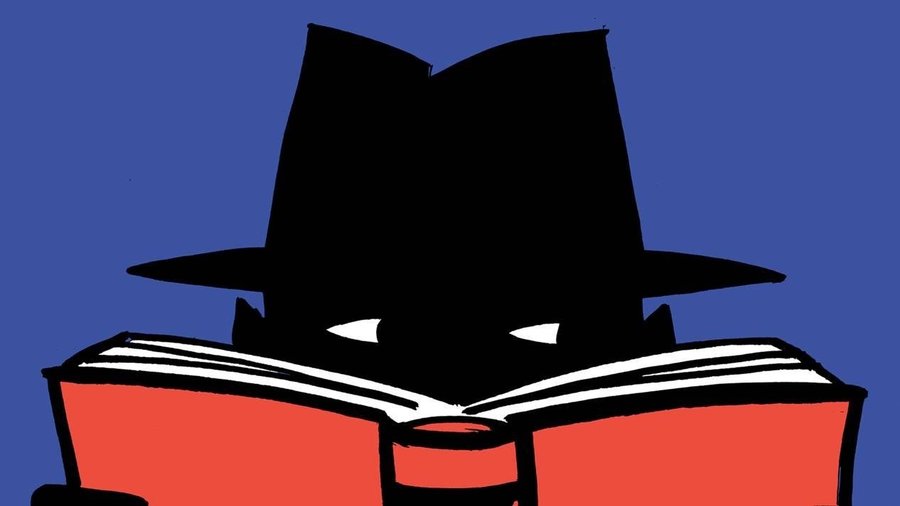Table of Contents
MYSTERIES + HISTORY
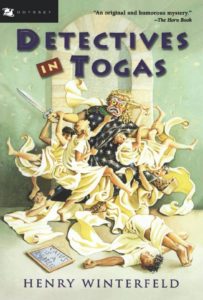
|
In Henry Winterfeld’s Detectives in Togas and Mystery of the Roman Ransom (reprints; Sandpiper, 2002), seven Roman schoolboys solve crimes with the help of their crochety tutor, the mathematician Xanthos. A nice mix of historical fact and humor. For ages 8-12. |
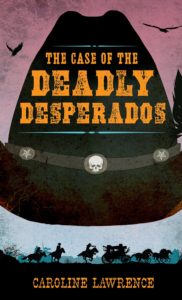
|
Caroline Lawrence’s The Case of the Deadly Desperados (Putnam Juvenile Books, 2012) – set in the Nevada Territory in the 1860s – is narrated by twelve-year-old Pinky Pinkerton, trapped at the bottom of a mine shaft, and writing his story on ledger sheets as he’s pursued by the ruthless gang of thugs who killed his foster parents. Pinky has a “Thorn” – a problem in recognizing emotions, now known as Asperger’s syndrome – which gives his account of his adventures an eccentric (and funny) tone, but his strengths, which include impressive powers of observation, make him a first-class young detective. Included are a map, a glossary, and a good deal of historical background information on the Wild West. For ages 8-12. |
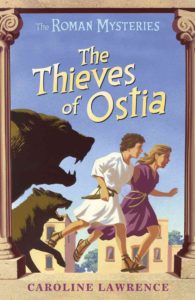
|
Caroline Lawrence’s The Thieves of Ostia (Orion Children’s Books, 2002), set in 79 CE, stars Flavia Gemina, the young daughter of a sea captain, and a brilliant amateur detective. In this, the first of a series, Flavia, along with friends Jonathan and Miriam, Nubia, an African slave girl, and Lupus, a mute beggar boy, sets out to discover who is killing the neighborhood guard dogs. Exciting adventure paired with historical detail. There are several sequels, among them The Secrets of Vesuvius, The Pirates of Pompeii, and The Assassins of Rome. For ages 9-14. |
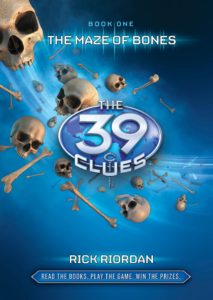
|
In Rick Riordan’s The 39 Clues (Scholastic, 2008), wealthy Grace Cahill has died, leaving her descendants – among them our heroes, orphaned brother and sister Dan and Amy Cahill – a perilous challenge: to track down the 39 clues leading to the source of the Cahill family’s power. Which power, as it turns out, is substantial: practically every important historical figure, among them Isaac Newton, Winston Churchill, Napoleon, and Benjamin Franklin, was a Cahill, or at least a Cahill second cousin. Included in the first volume is a good deal of (non-fiction) information about Benjamin Franklin, who was (fiction) responsible for the initial clues. There are nine sequels, written by a variety of authors. For more information and an accompanying game involving packets of Clue Cards (six per book), see the 39 Clues website. |
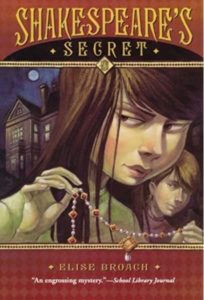
|
In Elise Broach’s Shakespeare’s Secret (Square Fish, 2007), twelve-year-old Hero Netherfield is named for a character in Shakespeare’s play, Much Ado About Nothing – which brings her nothing but misery and teasing in her new school. Then, in company with an elderly neighbor and an attractive eighth-grader, Danny, she becomes involved in a quest to find an heirloom diamond, once belonging to Anne Boleyn, and said to be hidden in Hero’s house. As they search for the missing jewel, they also discover clues that may reveal the true identity of the man who wrote Shakespeare’s plays. For ages 9-12. |
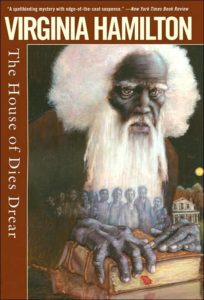
|
In Virginia Hamilton’s The House of Dies Drear (Aladdin, 2006), 13-year-old Thomas Small and family move into an old house in Ohio, once a station on the Underground Railroad, where abolitionist Dies Drear was murdered. Strange happenings at the house lead Thomas to explore its hidden passages and solve a mystery from the past. For ages 11 and up. |
| Excellent study guides to accompany The House of Dies Drear can be found at the Glencoe Literature Library | |
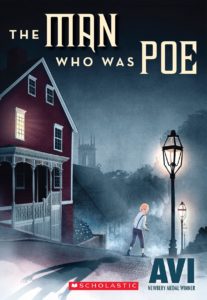
|
Avi’s The Man Who Was Poe (HarperCollins, 1997) is a fictional historical mystery: eleven-year-old Edmund’s family has disappeared – his sister, impossibly, from a locked room – and the distraught Edmund gets help from the mysterious Auguste Dupin, in reality Edgar Allan Poe. Readers, in the course of solving Edmund’s mystery, learn a great deal about Poe’s life and work. For ages 10-14. |
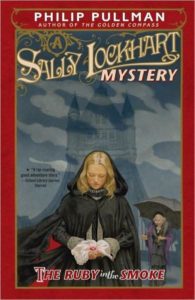
|
Philip Pullman’s The Ruby in the Smoke (Knopf Books for Young Readers, 2008) is a thriller set in Victorian London, the first of a series featuring 16-year-old Sally Lockhart, who sets out to find her father’s murderer, and becomes embroiled in a mystery involving the lost Ruby of Agrapar. Sequels include The Shadow in the North, The Tiger in the Well, and The Tin Princess. For ages 12 and up. |
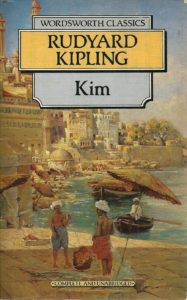
|
Rudyard Kipling’s Kim, originally published in 1902, is the now-classic story of the young son of an Irish soldier stationed in India, raised in the bazaar by a half-caste woman after his father’s death. Kim’s unique knowledge of the Indian world leads to his recruitment as a spy for the British in what was known as the “Great Game” – the complex intrigues for British domination in Asia. For ages 12 and up. |
| Kim’s Game, part of Kim’s training as a spy, is a memory exercise in which players compete to remember a dozen or so disparate objects, placed on a tray, studied for one minute, and then covered. Try it! (A version of Kim’s Game is also one of the experiments in Jim Wiese’s Detective Science. See Mysteries + Science, below.) | |
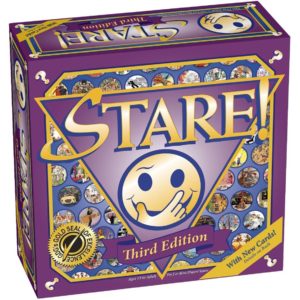 |
How would you do as an eyewitness? In the game Stare, players have 20 seconds to stare at an illustrated card – then are asked questions about the picture.
For younger players, see Stare Junior. |
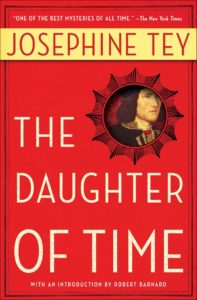
|
Josephine Tey’s The Daughter of Time (Scribner, 1995) is a catchy classic of historical detection, in which Inspector Alan Grant – hospitalized with a broken leg – sets about solving the 15th-century case of Richard III, accused of murdering his nephews, the little princes in the Tower. A great read for teenagers and adults. |
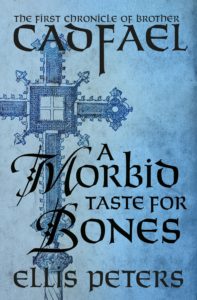
|
The title character of Ellis Peters’s addictive Brother Cadfael Series is a Welsh monk, herbalist, investigator, ex-Crusader, and resident of Shrewsbury Abbey in the early 12th century. Brother Cadfael solves mysteries (and furthers romances) to a background of conflict and intrigue, as King Stephen and Empress Maud battle for the throne of England. First book in the extensive series is A Morbid Taste for Bones (Grand Central Publishing, 1994). For teenagers and adults. |
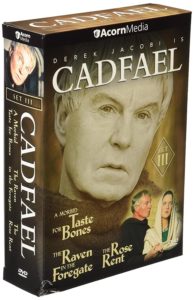
|
The Cadfael Series is available on DVD (Acorn Media), superbly done, with Derek Jacobi as Brother Cadfael. |
| Tackle these History Mystery Labs! See if you can solve mysteries surrounding the assassination of Caesar, the Black Death, the lost colony of Roanoke, and more. For ages 12 and up. |
